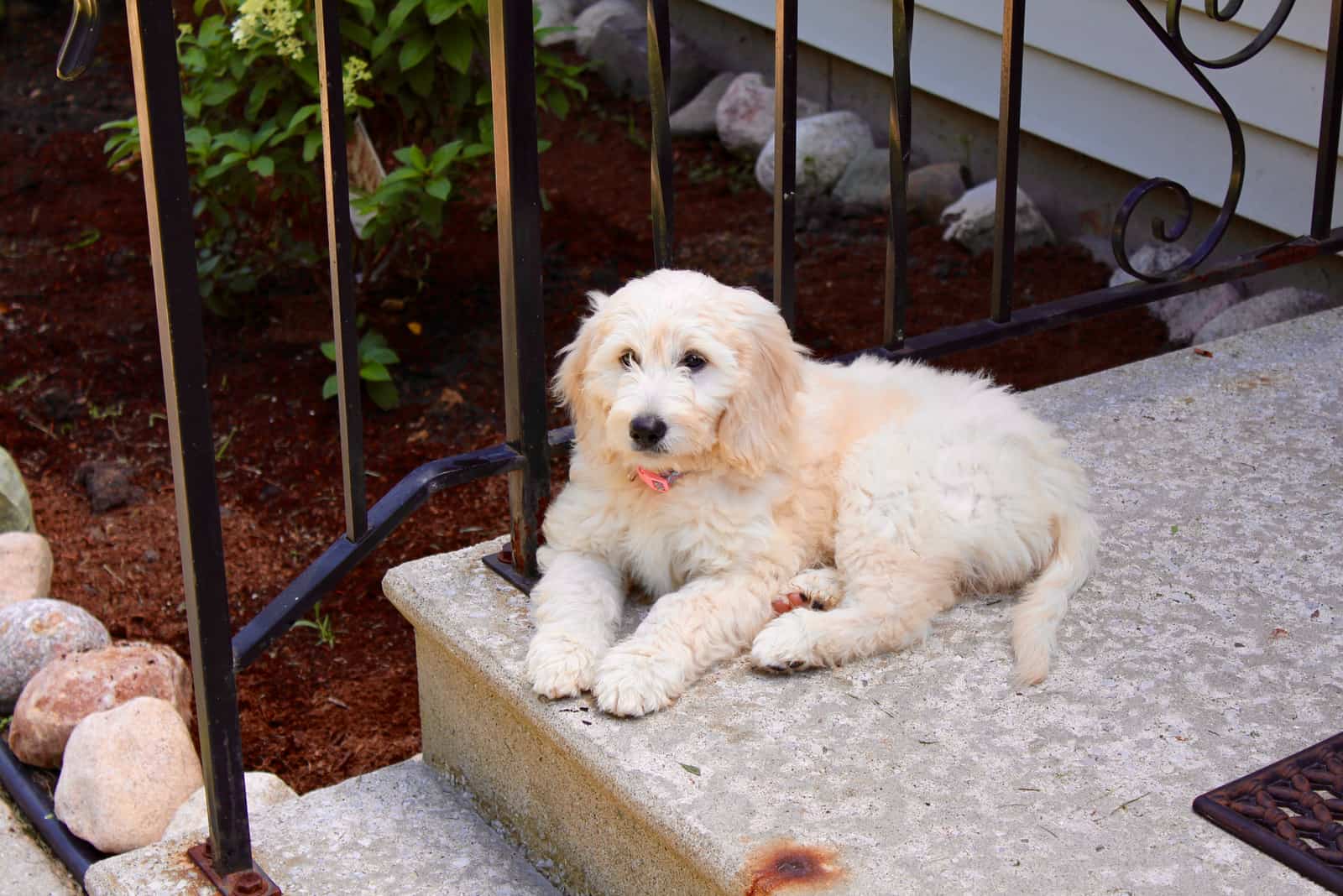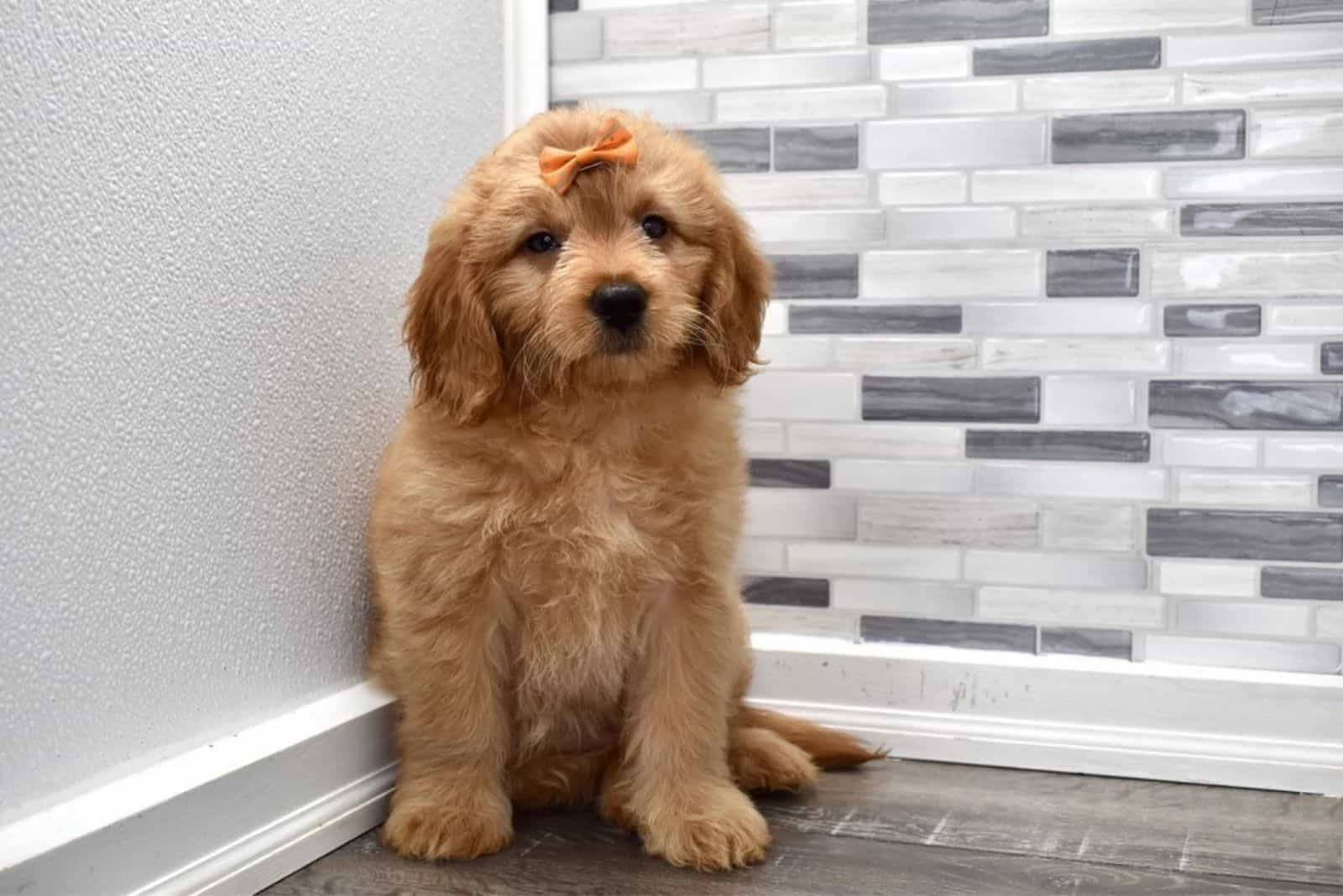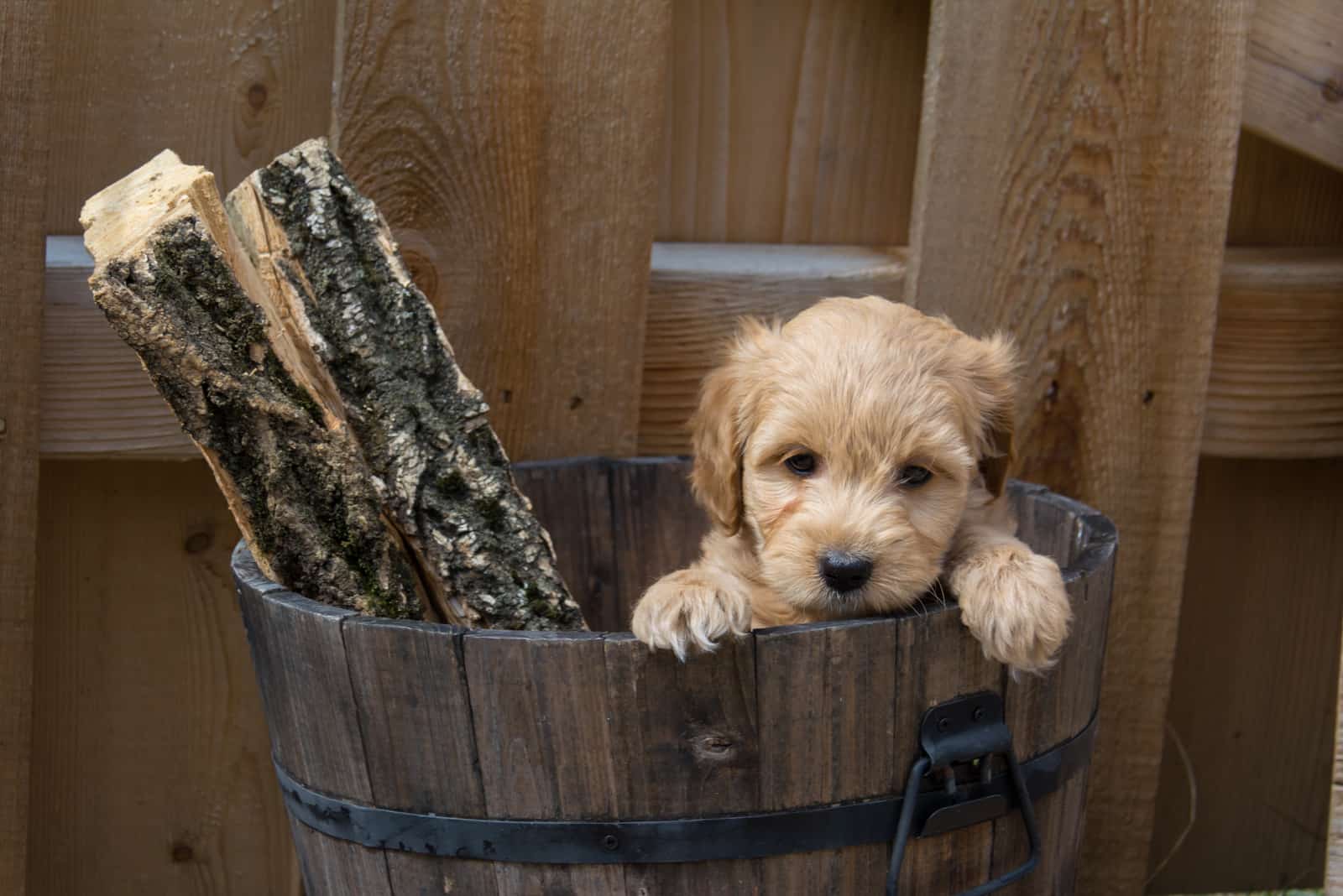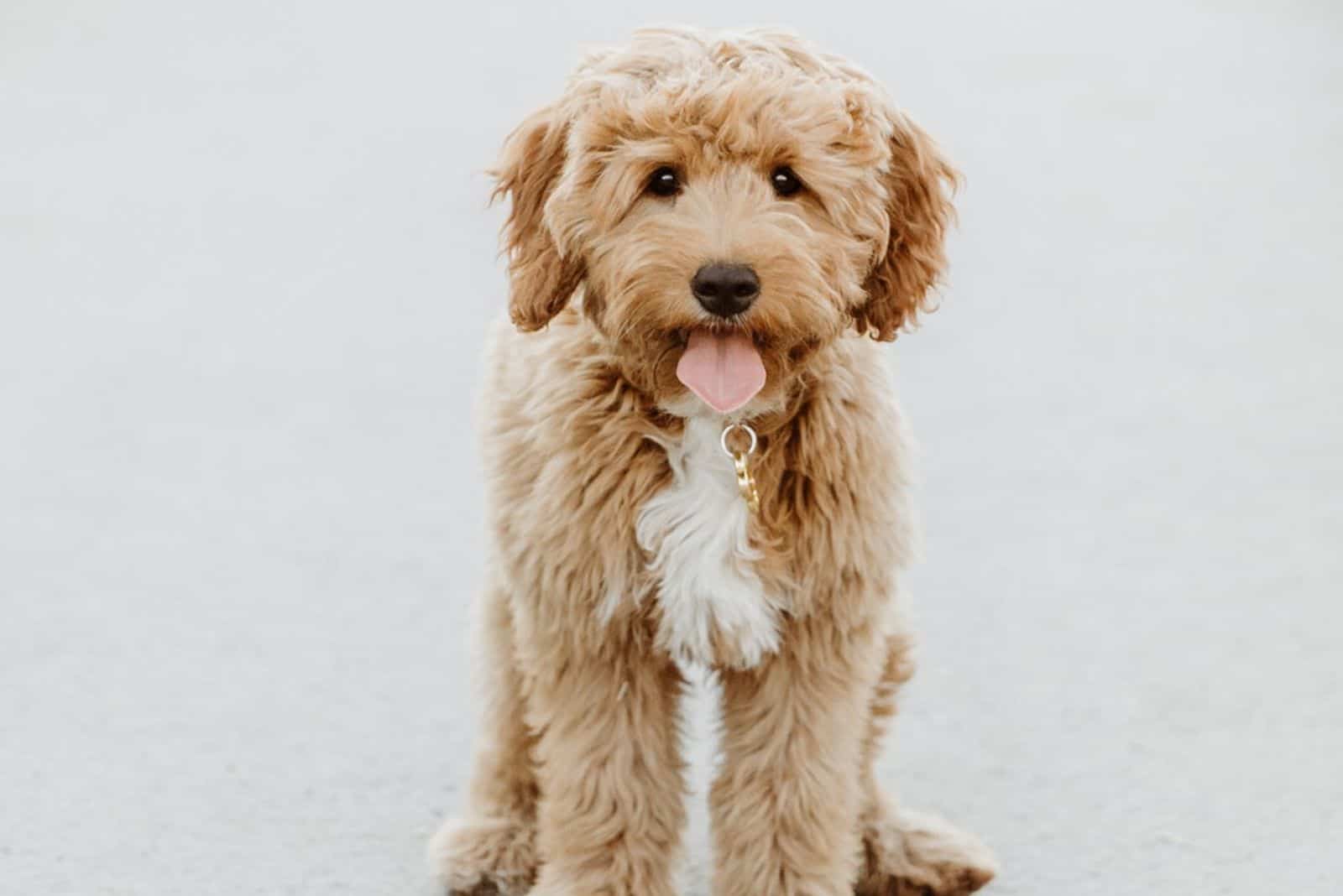Goldendoodles are what many consider to be ideal family pets. They are a hybrid breed of two of the top five most intelligent dogs – a purebred Poodle and a purebred Golden Retriever. This makes them clever, loyal, playful, and very easy to train. Their friendly nature makes them great therapy dogs, as well.
At the same time, Goldendoodles are mostly low-shedding and hypoallergenic, making them an excellent choice for people with mild allergies. For more severe allergy sufferers, Mini Goldendoodles are probably the best choice they could make.
But are all Mini Goldendoodles an equally good choice? While trying to find a new puppy for yourself, you’ve probably noticed letters and numbers in front of their names.
What does F1 Goldendoodle mean? Does that change the value of your beloved pooch?
Here’s everything you need to know about Mini Goldendoodle generations and what they really mean for both you and your pup.
Mini Goldendoodles

Mini Goldendoodles are a crossbreed of a Golden Retriever and a Mini Poodle. They are also known as Miniature Goldendoodles.
This is a small breed, no taller than 20 inches, that weighs typically 40 to 50 lbs, although they can sometimes be lighter. They have a lifespan of up to 15 years.
Sadly, for many dog lovers, this type of Doodle comes with its fair share of health complications, including progressive retinal atrophy, von Willebrand disease, bloat, patellar luxation, and hypothyroidism.
This is because both Goldens and Poodles have specific genetic disorders and are prone to similar diseases, which are only increased due to the Miniature Poodle’s size.
Despite this, many owners still decide to get Mini Goldendoodles because of their hypoallergenic features and easy maintenance.
Mini Goldendoodles will shed very little, if at all. Of course, this depends on their genetics to a certain extent, but more on that later.
They rarely shed due to their curly coat. Even when they shed, most loose hairs will get tangled in the curls so that they won’t fall on your furniture, floor, or clothes. This prevents the spread of dander, which is one of the most significant allergens for people with dog allergies.
Also, they naturally have less hair because of their small size and take less time for grooming and brushing. This means you won’t have to dedicate as much time to maintain them as you would a larger dog.
As such, looking at the Goldendoodle growth chart can also give you an idea of how much your dog will shed.
This doesn’t mean you shouldn’t brush them, though, as their curly fur is prone to tangles and matting.
Still, if you’d like a dog that won’t give you breathing issues and won’t require everyday vacuuming, you might consider getting a Mini Goldendoodle.
Genetic Types

The genetic types of Mini Goldendoodles depend to a certain extent on their generations. This is because, through generations, breeders add Poodle or Retriever genes to their bloodline.
The letters and numbers you see in front of Goldendoodle puppies imply their generations.
The ‘F’ you see stands for ‘filial hybrid,’ meaning the dog is a crossbreed and not a standard purebred. The number indicates the generation of the dog – or, in other words, how many generations have passed since the initial hybrid.
Finally, the ‘B’ means that the dog in question is a backcross, typically with a Poodle. In simple words, this means the Goldendoodle parent has been bred with a purebred dog.
So, if you have an F1B Mini Goldendoodle, this means that your pup is a first generation backcross.
These labels are the same for any hybrid dog breed. It doesn’t matter if you have a Labradoodle, a Bernedoodle, or a Goldendoodle; the labeling stays the same.
F1 Mini Goldendoodles

F1 Mini Goldendoodles are first generation Goldendoodles, meaning their parents are a Golden Retriever and a Mini Poodle. They are very unpredictable appearance-wise since there is a huge difference between their parents’ size and personality.
It is very difficult to predict the size of F1 Mini Goldendoodle puppies. You may happen to have only one pup that will be small in size in the entire litter. This is because these dogs are still 50% Golden Retriever.
F1 Miniature Goldendoodles can have both a straight, curly or even wavy coat type. They can experience various amounts of shedding, so they might not be great for allergy sufferers.
Read More: Mini Doodle Breeds
F2 Mini Goldendoodles

F2 Mini Goldendoodles are second-generation Goldendoodles. They are the litter of two F1 Mini Goldendoodle parents.
Similar to F1 Mini Goldendoodles, they vary greatly in size, coat type, and amount of shedding. In fact, this is probably the most inconsistent generation when it comes to Mini Goldendoodles!
Despite both parents being miniature, sometimes some recessive genes might express themselves. This means that there is a high chance you’ll get at least one standard Goldendoodle in the litter.
In fact, for this sole reason, many breeders won’t breed F2 Goldendoodles. They are quite challenging to breed the right way, and there is no guarantee they’ll look the way people want them to.
F1B Mini Goldendoodles

These Goldendoodles are the backcross of an F1 Mini Goldendoodle and one of its parent breeds – typically a Miniature Poodle. You’ll rarely find a backcross of Golden Retriever, and even rarer with a Standard Poodle since the offspring would lose their small size or hypoallergenic properties.
They are much easier to breed, and breeders have more control over the appearance of the litter. Since they are 75% Miniature Poodle, they’ll look like tiny teddy bears.
At the same time, due to the high amount of Poodle genetics, they’ll be much more hypoallergenic than F1 and F2 Goldendoodles. In fact, they might even be suitable for people with severe allergies!
Their fur will typically be wavy or curly, meaning you won’t have to worry too much about them shedding coat all over your furniture, clothes, or even guests! This makes them perfect pets for first-time dog owners who are not ready to spend too much time cleaning up.
Just keep in mind that they require quite a lot of grooming and brushing since their coats are prone to matting.
F1BB Mini Goldendoodles

While these pups can be considered multigen, they’re worth mentioning to better understand the breed.
F1BB Mini Goldendoodles are the second backcross of the F1 Mini Goldendoodle. In other words, their parents are an F1B Mini Goldendoodle and a purebred dog – again, this is usually a Miniature Poodle.
F1BB Mini Goldendoodles can be very tiny in size, especially if you keep breeding them with the smallest Poodles possible. Some might even be teacup size!
They are low-shedding and mostly hypoallergenic. If you have severe dog allergies, you might want to consider getting this generation.
Also, they are easy to breed since they have enough Poodle genes for breeders to know what they can expect from the litter. Keep in mind that this can influence their price, so they can be quite expensive.
Multigen Mini Goldendoodles

Anything further than the third generation is considered multigen or multigenerational Goldendoodles.
These are F3 Goldendoodles (the offspring of two Goldendoodles, whether they are F2 and F2, F1 and F2, and so on), F1BB Goldendoodles, F2B Goldendoodles (the backcross of F2 Goldendoodle), F2BB Goldendoodles (the second backcross of F2 Goldendoodles), etc.
There is a huge variety of multigen Mini Goldendoodles, and the predictability of the offspring depends on the genetic mix.
As you might already realize, the more Poodle genes there are in a Goldendoodle, the more standardized the offspring will look.
This means that, while an F3 litter will be even more unpredictable than an F2 one, F2BB Mini Goldendoodles will almost always have a curly coat, be small in size, and low-shedding.
Because of this, if your breeder is selling multigen Mini Goldendoodles, always ask him for the precise genetics of your future pup. While many owners won’t care how their pup looks, people with dog allergies should know what they’re getting themselves into.
There Is A Huge Variety Of Mini Goldendoodles

Photo from: @diesel_nycgoldendoodle
While most people imagine Mini Goldendoodles as living teddy bears, the truth is, they come in many shapes and sizes. Hybrid breeds tend to be problematic, as there is no way to fully predict how the offspring will look.
A reputable breeder will always have excellent communication with their customers. They have to know the genetics of their puppies, so they can let you know what kind of puppy you’re getting.
With purebred dogs, this is easy. Everyone knows how a Golden Retriever will look! But with crossbreeds, there is a huge number of possibilities. Mini Goldendoodles are no different.
So, which generation is the best?
There is no definite answer to this question. It all depends on your personal needs and preferences. If you’re looking for a hypoallergenic dog, you should look for pups with more Poodle genes, so backcrosses (F1B, F2B, F1BB, etc.) should work for you.
On the other hand, if you don’t really care about the looks and features of your new pet, you can save some money by choosing an F1, F2, or F3 Goldendoodle.
While there is no rule as to how these pups will look, they all make wonderful family pets as they are friendly, easy to train and they will make your life a bit more beautiful and fun.
Read Next: 11 Best Miniature Goldendoodle Breeders In The USA You Need To Check Out
















